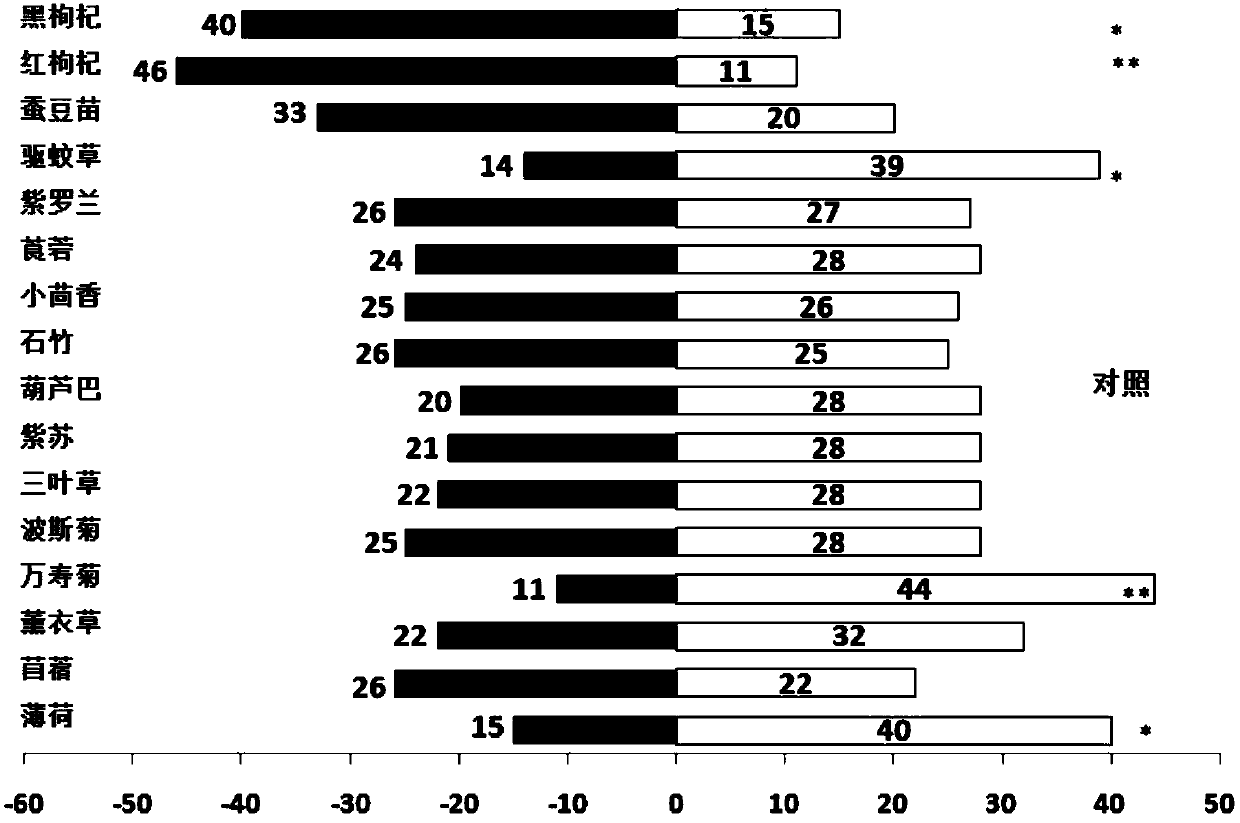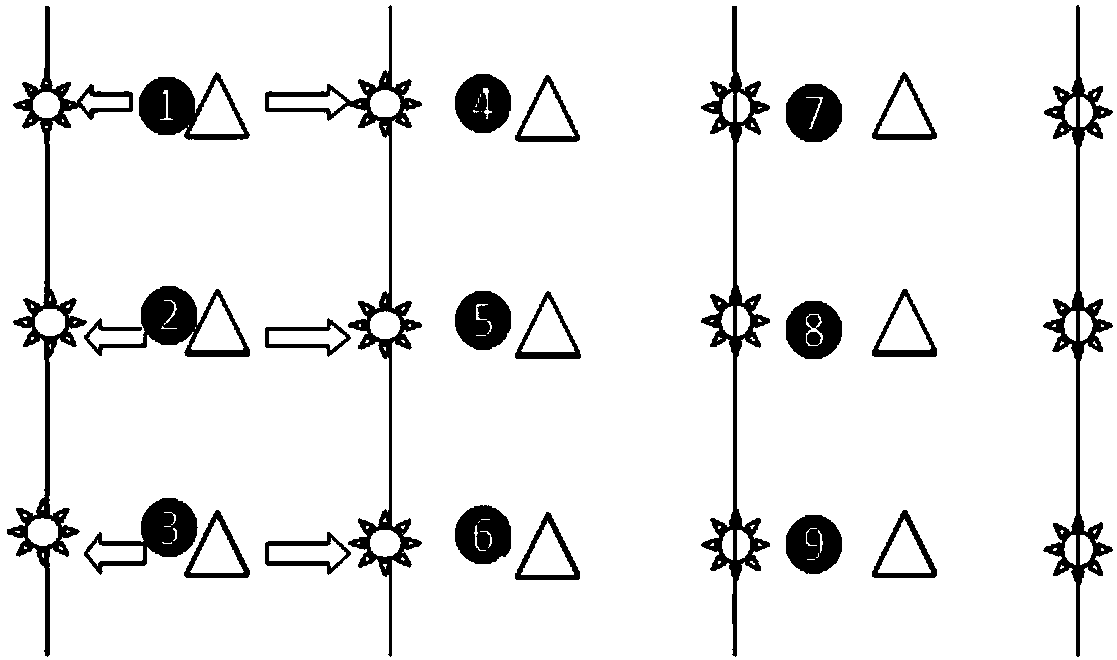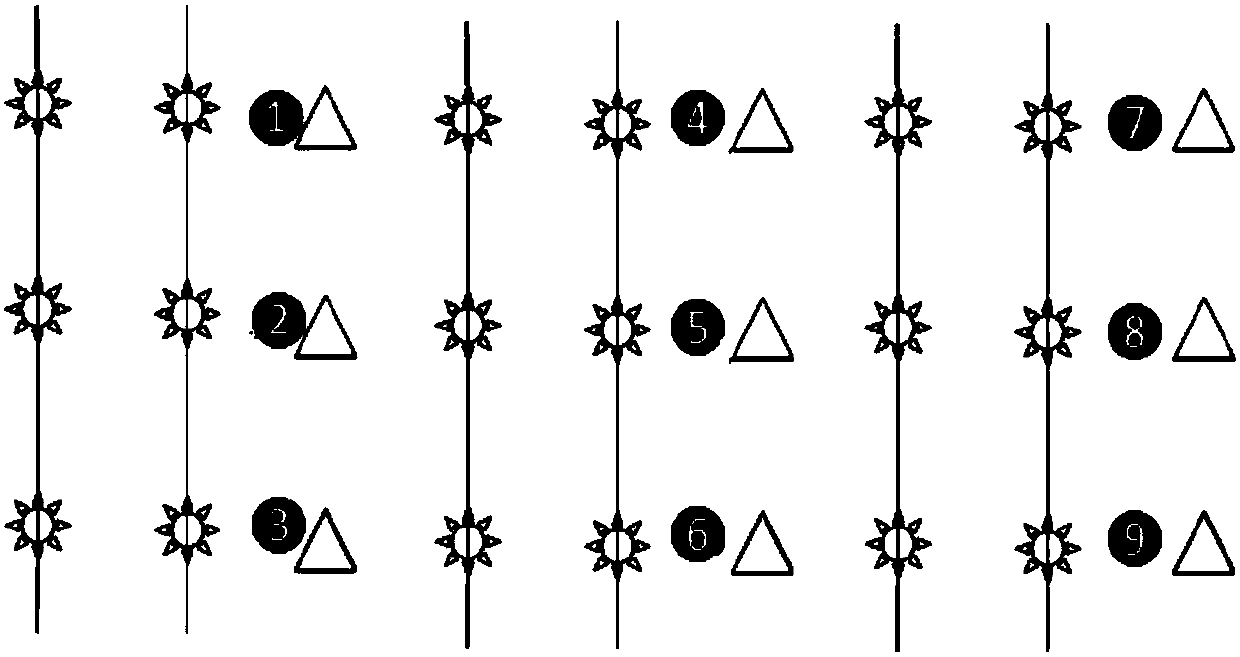Method for preventing and controlling Chinese wolfberry aphids
A wolfberry aphid, prevention and control technology, which is applied in the agricultural field, can solve problems such as pollution, residual poisoning, and destroy ecological balance, and achieve the effects of avoiding damage, reducing the use of pesticides, and inhibiting the harm of aphids to wolfberry.
- Summary
- Abstract
- Description
- Claims
- Application Information
AI Technical Summary
Problems solved by technology
Method used
Image
Examples
Embodiment 1
[0025] Embodiment 1, the screening of avoidance plant
[0026] (1) Test aphids
[0027] The sex-taxis behavior was determined by using wolfberry aphids reared indoors. Lycium barbarum aphids collected from Zhongning wolfberry fields in Ningxia were inoculated on wolfberry grown in the greenhouse. After two days, the inoculated aphids were removed, and wingless adult aphids with basically the same individual size and state were selected. as test insects.
[0028] (2) Selection of approaching and avoiding plants
[0029] According to the resource characteristics of Ningxia, 13 kinds of plants including marigold, fenugreek, perilla, alfalfa, clover, mosquito repellent, violet, scopolamine, cumin, carnation, cosmos, lavender and mint were screened. Three species of Lycium barbarum, Lycium barbarum, and broad bean were used as host plants for the tested aphids, and the effects of 13 plant volatiles on the behavior of Lycium barbarum aphids were determined.
[0030] Preparation o...
Embodiment 2
[0037] Embodiment 2, the field planting test of evasive plant
[0038] (1) Arrangement of investigation points in the experimental area of approaching and avoiding plant intercropping
[0039] The implementation time of this experiment was 2016. A total of 70 sampling points were arranged in the intercropping test area, including 27 on the avoiding plants and 43 on the Lycium barbarum; the survey time was July 10, July 17, July 30, On August 12, August 19, August 27, September 1, September 15, and September 20, there were 9 surveys in total. Nine survey points (①~⑨) were evenly set up in each plot, and two different ground traps were set under the wolfberry tree at each point.
[0040] Intercropping (1:1) investigation point layout for each row
[0041] see details figure 2 , Represents Lycium barbarum, Δ represents repelling plants, a total of 9 survey points, and each point investigates repelling plants and one branch in the east and west of two adjacent Lycium barba...
PUM
 Login to View More
Login to View More Abstract
Description
Claims
Application Information
 Login to View More
Login to View More - R&D
- Intellectual Property
- Life Sciences
- Materials
- Tech Scout
- Unparalleled Data Quality
- Higher Quality Content
- 60% Fewer Hallucinations
Browse by: Latest US Patents, China's latest patents, Technical Efficacy Thesaurus, Application Domain, Technology Topic, Popular Technical Reports.
© 2025 PatSnap. All rights reserved.Legal|Privacy policy|Modern Slavery Act Transparency Statement|Sitemap|About US| Contact US: help@patsnap.com



